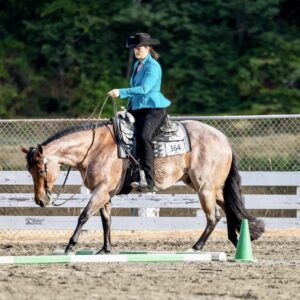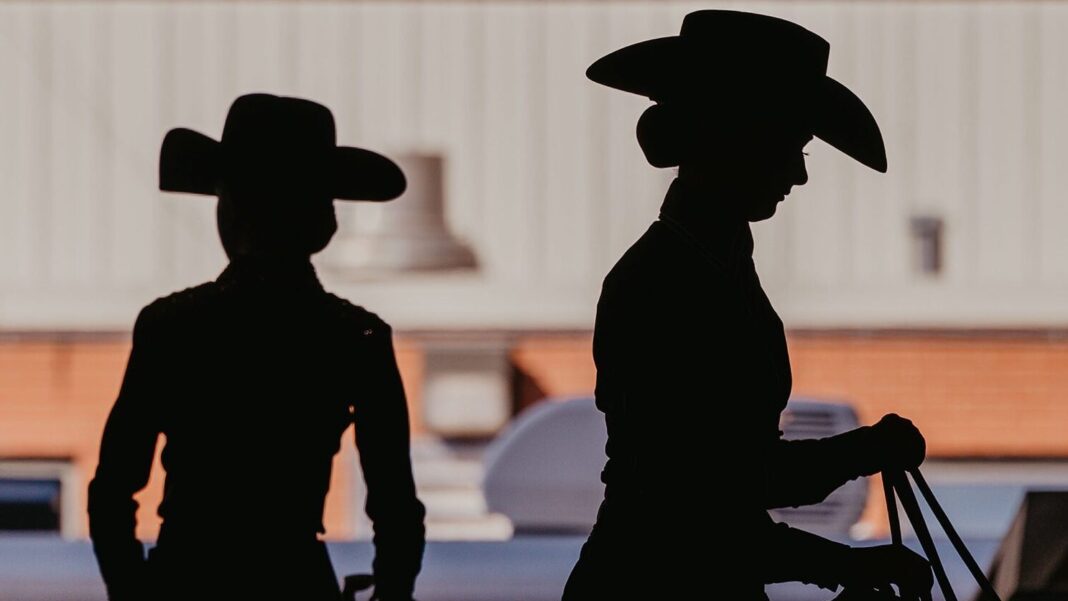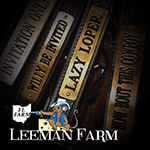Do you ever suffer from anxiety and brain fog? Anxiety that is not related to fear, but an anxiety disorder that results in completely blacking out while you are showing?
Maybe you panic and completely forget your trail pattern or you freeze right in the middle of your showmanship pattern and forget to back. You study your patterns until you are blue in the face, but your brain all of a sudden starts firing sideways and you forget everything.
Trainers mention that this type of nervous rider is difficult to coach, but there are simple ways to help prevent this from happening from the very beginning. We’ve provided some tips from top professionals on routines and habits to form when that panic starts rising up from the pit of your stomach.
Go Back to the Basics
 To start, Pennsylvania trainer Alex Bryner would begin with bringing everything down to the basics. “Start by learning your pattern and walking it on foot. Set up any necessary pieces needed – like cones or markers. Talk yourself through how you want to execute the pattern with your trainer/coach,” Bryner says.
To start, Pennsylvania trainer Alex Bryner would begin with bringing everything down to the basics. “Start by learning your pattern and walking it on foot. Set up any necessary pieces needed – like cones or markers. Talk yourself through how you want to execute the pattern with your trainer/coach,” Bryner says.
Remind yourself while doing this, find spots where you’re going to take a deep breath to keep yourself focused, Alex says. “I would repeat this while on the horse, preferably doing so where you will be showing the event. Prior to showing, be ready early. If available, watch some other runs before your class. Run through the pattern while closing your eyes, and remembering to take deep breaths. Use this while visualizing the best outcome. Keep getting yourself out there.”
“Blacking out in the middle of your runs is what all of our nightmares are made of,” says Lauren Crivelli, a top amateur on the show circuit. Lauren says that it’s something that happens to a lot of us. Working on being present during your run can help to calm the nerves. Focus on each stride and what you are feeling your horse doing and what the next move should feel like.
Select amateur Sarah Longworth says that she used to not practice the pattern as a whole, so her horse wouldn’t anticipate, but she found that she needed to feel the flow of the pattern so she didn’t forget aspects of it.
“For the pre-class warm up, I practice the components and watch a few goes to see how I want to lay out my pattern. I’m easily swayed to stop for chit chat, so I try to avoid a lot of that in the warm up pen and focus on how my horse feels,” Longworth adds.
Meditation & Breathing
Both trainer Megan Vanderslice and amateur Lauren Crivelli agree that doing breathing exercises is very helpful in calming nerves.
Practicing box breathing through your diaphragm before your run can help calm your nervous system. “Tell yourself that this is what you are doing for fun. So laugh a little and just go have fun.”
Vanderslice agrees, “The best tip I have for this scenario is simple meditation. Such as box breathing. I often teach my clients to box breathe at the in gate. It has proven to be very effective in this situation. It gives you a moment to pause and breathe while gathering yourself.”
Practice Self Care
Washington trainer Sarah Diamond says that riders need to physically and mentally prepare to practice and compete.
Diamond recommends sleeping seven to eight hours consecutively and to eat healthy. “Feed your body and mind, real food with good nutrition in mind. No fad diets, no mainlining caffeine and sugar to compensate for not sleeping properly.”
Avoid Distractions
 Diamond has several suggestions when it comes to avoiding distractions. Phone calls, texts, notifications, social media, pictures, videos, chats, etc. All of these take up brain space and focus. Family, friends, dogs, ex-boyfriends, etc.
Diamond has several suggestions when it comes to avoiding distractions. Phone calls, texts, notifications, social media, pictures, videos, chats, etc. All of these take up brain space and focus. Family, friends, dogs, ex-boyfriends, etc.
“Anyone not completely committed to helping you achieve your immediate goal needs to be put on the momentary back burner while you prepare,” Diamond suggests.
Also, work, vacation, other plans, celebrations, dinners, drinks or whatever you’ve got going on in life needs to be put on pause while you focus on the task at hand.
Use Repetition
Diamond also explains that committing the pattern/test to muscle memory through repetition is a very important process that can help when you are struggling.
“Read the pattern enough times that you can recite it with your eyes closed. Correctly. More than once,” Diamond says. “Execute the pattern on foot from memory based on the previous step. More than once. Ride the pattern at a walk calling the next element to yourself from memory. If you forget, stop where you are.”
“Then,” Diamond continues, “try to recall the next element before you proceed. Do not practice a wrong path or track because you forgot where to go. It will interrupt your process. Once you can call the pattern to yourself at a walk proceed to execute the pattern as written.”
“Next,” Sarah says, “execute the pattern. From memory. Three times in a row with no mistakes. If you make a mistake, start your three times in a row over until you have committed this test to muscle memory.”
Finally, repeat all steps the next day, prior to competition. You need to practice the day before, and the morning of.
 “Watch the competition execute correct patterns. Take time to walk to the stands and view 3-10 rides before you compete, calling out the next element quietly to yourself. You are not watching to assess the level of competition. You are watching to visually commit the pattern to memory. Say it. See it. Do it. All of these methods of learning are important,” Sarah adds.
“Watch the competition execute correct patterns. Take time to walk to the stands and view 3-10 rides before you compete, calling out the next element quietly to yourself. You are not watching to assess the level of competition. You are watching to visually commit the pattern to memory. Say it. See it. Do it. All of these methods of learning are important,” Sarah adds.
Side note – Diamond personally finds it helpful to string pieces together. For instance, in her mind she will think “right lead, right turn, right diagonal” = “right, right, right. Those are the same.” Another string would be “left circle, right lead, left diagonal” = “left, right, left, those are opposite.” Or if she can’t remember which diagonal comes first, she thinks “right diagonal, I’m right handed.”
Final thoughts from Sarah – “Once you’ve completed all steps to commit the test to memory, you have truly prepared yourself to be tested. Before you begin, take a deep breath….or 5, and say to yourself, ‘I know what to do and I will remember once I begin.’”
See a Therapist
If none of these tips seem to work, Crivelli suggests riders to seek out a licensed therapist or sports psychologist to help them work through deep seated issues. Some things may take longer and require a professional to find a solution.
Always remember, showing horses is supposed to be fun. If it’s not, then you may need to reevaluate and determine the next steps to develop positive ways to enjoy the time with your horse in the show arena. Enjoy the ride!









